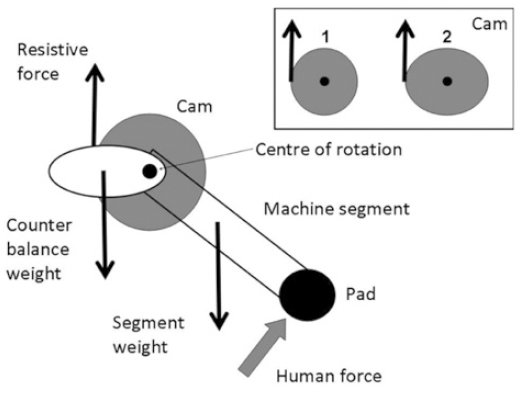Abstract
Introduction:
Limited evidence has been shown on ways to optimize the mechanical design of machines in order to minimize knee loads.
Objective:
This study compared six computer simulated models of open kinetic knee extension exercises for patellofemoral pressure and tibiofemoral forces.
Methods:
A musculoskeletal model of the lower limb was developed using six different cam radius to change resistive forces. A default machine, a constant cam radius, a torque-angle model, a free-weight model and two optimized models were simulated. Optimized models reduced cam radius at target knee flexion angles to minimize knee forces. Cam radius, human force, tibiofemoral compressive and shear force, and patellofemoral pressure were compared for the six models using data from five knee flexion angles.
Results:
Large reductions in cam radius comparing the free-weight model to other models (73-180%) were limited to the large human force for the constant cam model to other models (9-36%). Larger human force (13 -36%) was estimated to perform knee extension using a constant cam radius compared other models without large effects in knee joint forces.
Conclusion:
Changes in cam design effected human without a potential impact in knee loads.
Keywords:
Knee; Resistance Training; Torque




